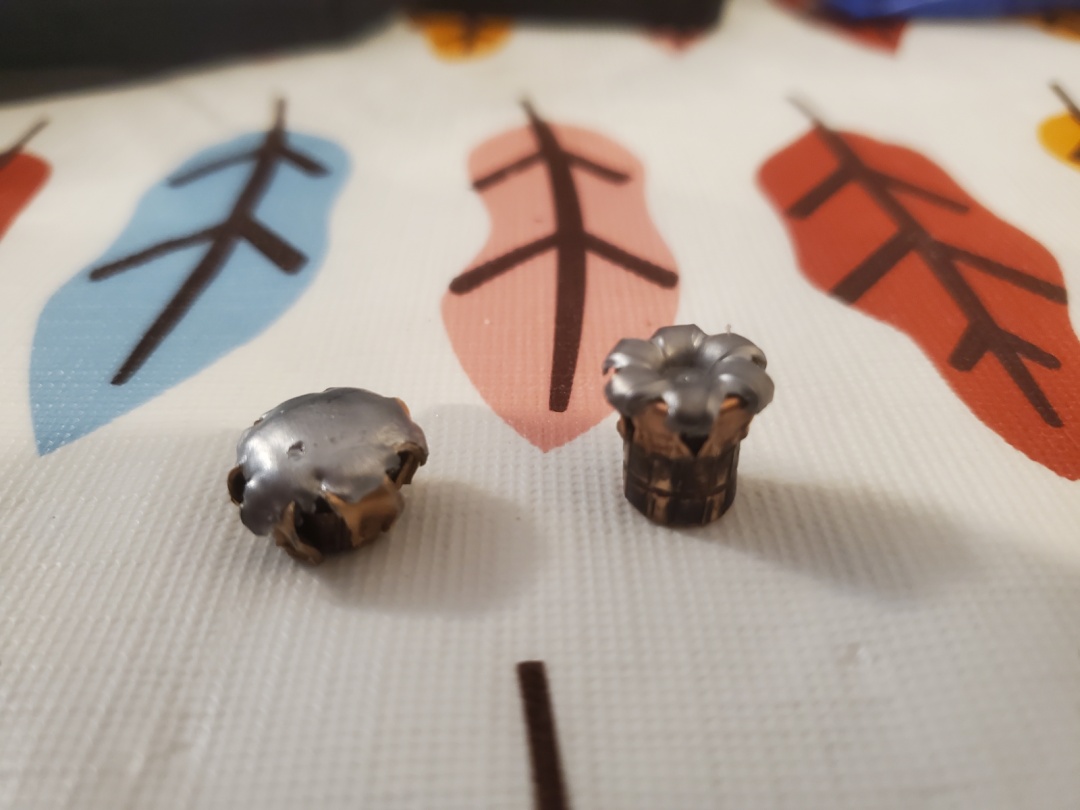In the midst of doing much needed ballistic therapy with friends, some shooting was done from a Henry Carbine into ballistic gel. On the left we have Federal Punch 124gr and on the right Hornady’s Critical Duty 135 grains. Both showed good expansion and no detectable mass loss.
Also, a frangible was tested, but truthfully, I would barely trust it to stop a rabbit.


I’ve been puzzled by the notion of “frangible” rounds for a while now. Part of that comes from seeing a review of one of them, where they were fired into cinderblocks — which were destroyed. Since the theory of frangibles, as I understand it, is that they don’t penetrate walls, that was rather a damning test result. Especially because sheetrock walls are less resistant than cinderblocks.
Re the cinder blocks, did the projectile continue on through or did it stop there? It’s my understanding that the progression through the barrier (or ricocheting from) of a solid shot, that the frangible is supposed to address, not so much the minimization of damage to the first surface encountered.
.
Or, put more succinctly, I think they’re supposed to be non-penetrating, not low-energy.
Overpenetration versus a missed shot are two very different scenarios.
If you shoot your assailant, and the bullet passes through and harms an innocent, that is not desirable, and that is what the frangible bullets are supposed to prevent.
Penetrating a wall when there is no intervening matter, is not what they were designed for.
Interesting. I had a very definite impression that the latter case was intended. If it’s not, the marketing certainly doesn’t make it clear.
Boris, I don’t remember the answer to your question (or if it was even mentioned in the video); it was some years ago.
And then there’s the whole issue of getting small chunks of projectile metal all through your gun’s internals…
What brand of frangible? On a related note there was an infomercial on Inceptor polymer/copper powder rounds on TTAG a day or so ago.
I’ve done a lot of ballistics gel testing of self-defense rounds over the past five years. All through a four-inch barrel at 21 feet with three layers of denim on the gel blocks.
.
Rounds Used: Barnes 115gr Tac-XPD +P, Federal 150gr Micro HST, Ranger 147gr T Series (both the RA9T older originals and new rounds RA9SXTC), Corbon 115gr DPX, PDW Arms 115gr Tac Ops, and the Lehigh Defense FTM rounds in Xtreme Defender, Xtreme Penetrator, and Maximum Expansion all by Lehigh Defense and Underwood at standard pressure.
.
For traditional hollow points nothing beats the 0.88-0.92″ expansion and 12-14″ penetration of the Lehigh Def. Max, Expansion. Ranger T RA9T and Corbon DPX had almost identical results with 0.82″ expansion and 14″ penetration. Third were the Federal Micro HST with .078″ expansion and 16″ penetration.
.
The Fluid Transfer Monolithic fluted bullet nose design beat all the hollow points. The hemorrhage channel was averaging a little over one inch with 16-18″ penetration. I added three additional layers of denim and still achieved the same hemorrhage channel, but penetration dropped to 16″ and the Penetrator rounds I ruled out due to 20-24″ penetration with a 0.80 hemorrhage channel.
.
Barnes Tac-XPD +p was inconsistent but when it worked, it really worked, creating a 0.88″ expansion but only 10″ penetration. If memory serves me right it achieved a 66% consistency rating. The PDW Arms Tac Ops was unpredictable, two boxes and I could not produce enough consistency to get a reliable average–best results 0.78″ with 8-9″ penetration.